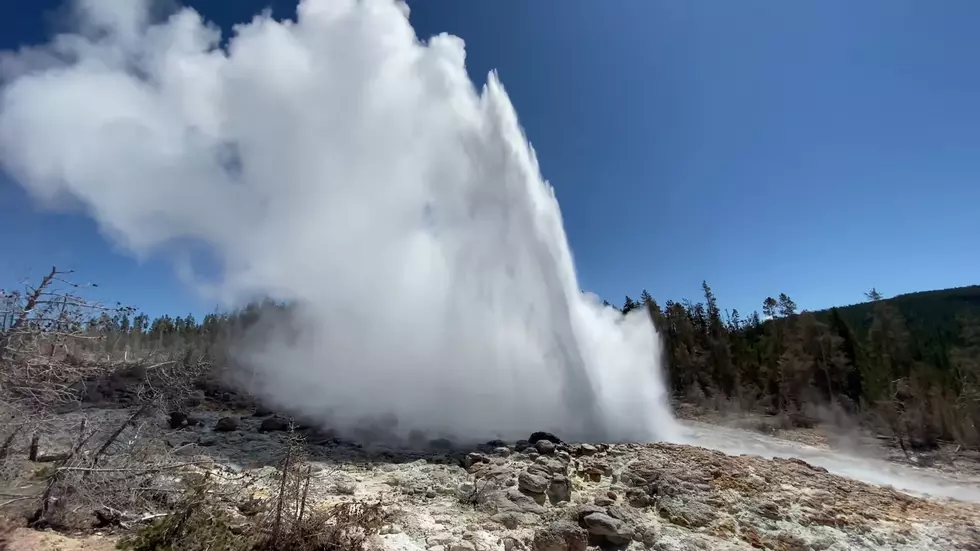
New Study Says Steamboat Geyser Reawakening Remains a Mystery
It's no reach to say that the ecosystem of Yellowstone National Park is one of the most dynamic and interesting in the world. It's a constantly changing environment that is not short on mystery. One of the biggest questions in the park over the past several years is why did Steamboat Geyser reawaken. A new study attempted to solve the mystery, but the conclusion is they still don't know.
If you're not familiar with Steamboat Geyser, it's reawakening back in 2018 has made it one of the must-visit parts of the Norris Geyser Basin in Yellowstone thanks to spectacular eruptions like this one.
DNYUZ recently shared a story based on a new research project that tried to figure out what caused Steamboat Geyser to come back to life in 2018 after years of dormancy. It's a scientific paper with lots of technical details in it. I can sum it up like this. They wanted to see if external factors like uplift, earthquakes or precipitation caused Steamboat's recent revival. Here's a quick conclusion from the report:
Our results suggest that Steamboat’s 2018 reactivation was not triggered by external factors, such as varying water recharge or dynamic stresses associated with earthquakes, but, rather, by internal hydrothermal processes...We argue, however, that the available data are ultimately insufficient to relate Steamboat’s reactivation to uplift episodes at Norris Geyser Basin.
In other words, they don't know for sure. If it was due to underground thermal factors, why didn't the other geysers in the area also come back to life? It's a mystery.
We spoke with Mike Poland, the scientist in charge of Yellowstone National Park last summer and he confirmed the constant change in Yellowstone and why that really is a normal process and not an indication of an imminent eruption. I reached out to him in regard to this new report and he added this:
There's still no clear indication of why Steamboat became active. But the study does cast some light on what didn't cause the geyser to come alive. For example, it does not appear to have any correlation with rainfall/snowfall (wet versus dry years), although it does seem that the time between Steamboat eruptions is longer in the winter (when groundwater levels are low) versus the summer (when there is lots of groundwater from snowmelt). So groundwater levels modulate the geyser activity but didn't kick anything off. And the geyser's reactivation was not associated with earthquake activity. And there was no change in the temperature of the subsurface fluid reservoir. While it's a little unsatisfying that we don't have "the answer" for why Steamboat has gone into a phase of new activity, we at least can narrow down the range of possibilities, which is still helpful.
The only constant with Steamboat Geyser and Yellowstone National Park overall is change and the unknown it appears.

10 Reasons NOT to Move to Wyoming
More From My Country 95.5









